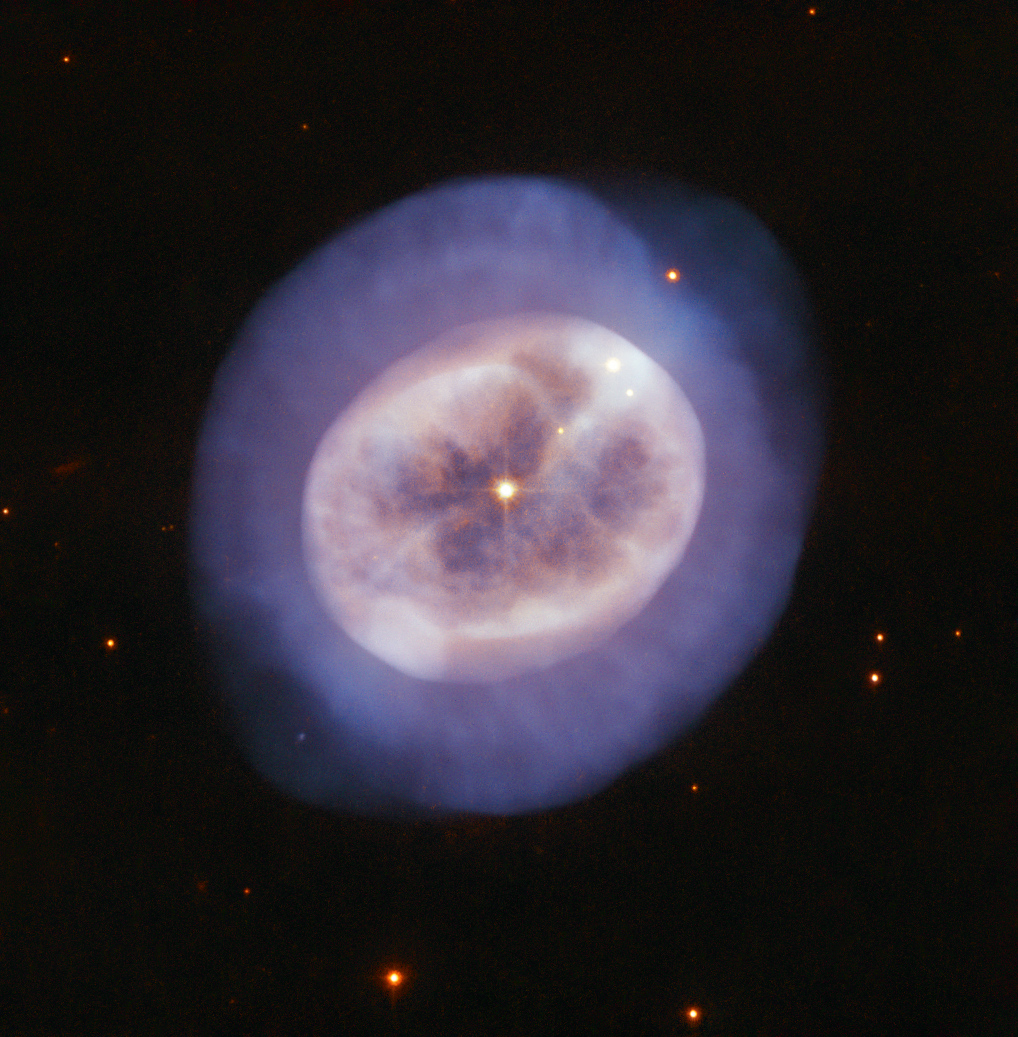Hubble Spots Purple 'Jellyfish' Star Glowing in Abyss of Deep Space
The aging star is shedding layers of gas into space.
This stunning new photo from the Hubble Space Telescope appears to capture a cosmic jellyfish floating in space, but in reality this structure is no living creature.
Instead, this object — known as NGC 2022 — shows what happens when an old star, similar in size to the sun, grows old and casts off layers of gas. Astronomers call these objects planetary nebulas because in the first low-power telescopes of the 1600s and 1700s, they looked a bit like planets. Today, we know the term "planetary nebula" is a misnomer — this nebula or cloud of gas has nothing to do with planets.
Rather, NGC 2022 is a red giant star. That's the next stage of evolution after a sun-like star (a star between three and eight masses of the sun) finishes converting hydrogen into helium in its core using nuclear fusion. The two light atom types bond or fuse together,creating a heavier atom.
Related: The Best Hubble Space Telescope Images of All Time!
Eventually, stars of this type run out of hydrogen in the core. Gravity squeezes the star and causes temperatures to rise during the contraction. Once the temperature soars high enough, it's possible for helium to fuse into carbon — and that causes the star to expand to a much larger radius than before. This newly expanded star, called a red giant, then sloughs off its outer layers of gas into space.
"More than half of such a star's mass can be shed in this manner, forming a shell of surrounding gas," Hubble officials said in a statement. "At the same time, the star's core shrinks and grows hotter, emitting ultraviolet light that causes the expelled gases to glow."
Related: How To Tell Star Types Apart (Infographic)
Breaking space news, the latest updates on rocket launches, skywatching events and more!
The core of the star is visible in the center of the image, glowing a fierce yellow-orange. Its radiation lights up the surrounding clouds of gas, portrayed in much cooler wavelengths of pink and purple.
The sun is about 4.5 billion years old and roughly halfway through its phase of burning hydrogen into helium. When its red giant phase occurs, the sun is expected to engulf much of the inner solar system — possibly including the Earth. Either way, life is not expected to survive on our planet, but luckily, that's not expected to happen for about another 4.5 billion years. That's plenty of time for humans to figure out interstellar travel and find a new place to live.
- Ghost of a Dying Star Hints at Sun's Future
- Scientists Spot Two Dead Stars Locked in a Dizzying Dance
- Don't Panic, But the Sun Will (Far) Outlive Earth (Op-Ed)
Follow Elizabeth Howell on Twitter @howellspace. Follow us on Twitter @Spacedotcom and on Facebook.

Elizabeth Howell (she/her), Ph.D., was a staff writer in the spaceflight channel between 2022 and 2024 specializing in Canadian space news. She was contributing writer for Space.com for 10 years from 2012 to 2024. Elizabeth's reporting includes multiple exclusives with the White House, leading world coverage about a lost-and-found space tomato on the International Space Station, witnessing five human spaceflight launches on two continents, flying parabolic, working inside a spacesuit, and participating in a simulated Mars mission. Her latest book, "Why Am I Taller?" (ECW Press, 2022) is co-written with astronaut Dave Williams.

